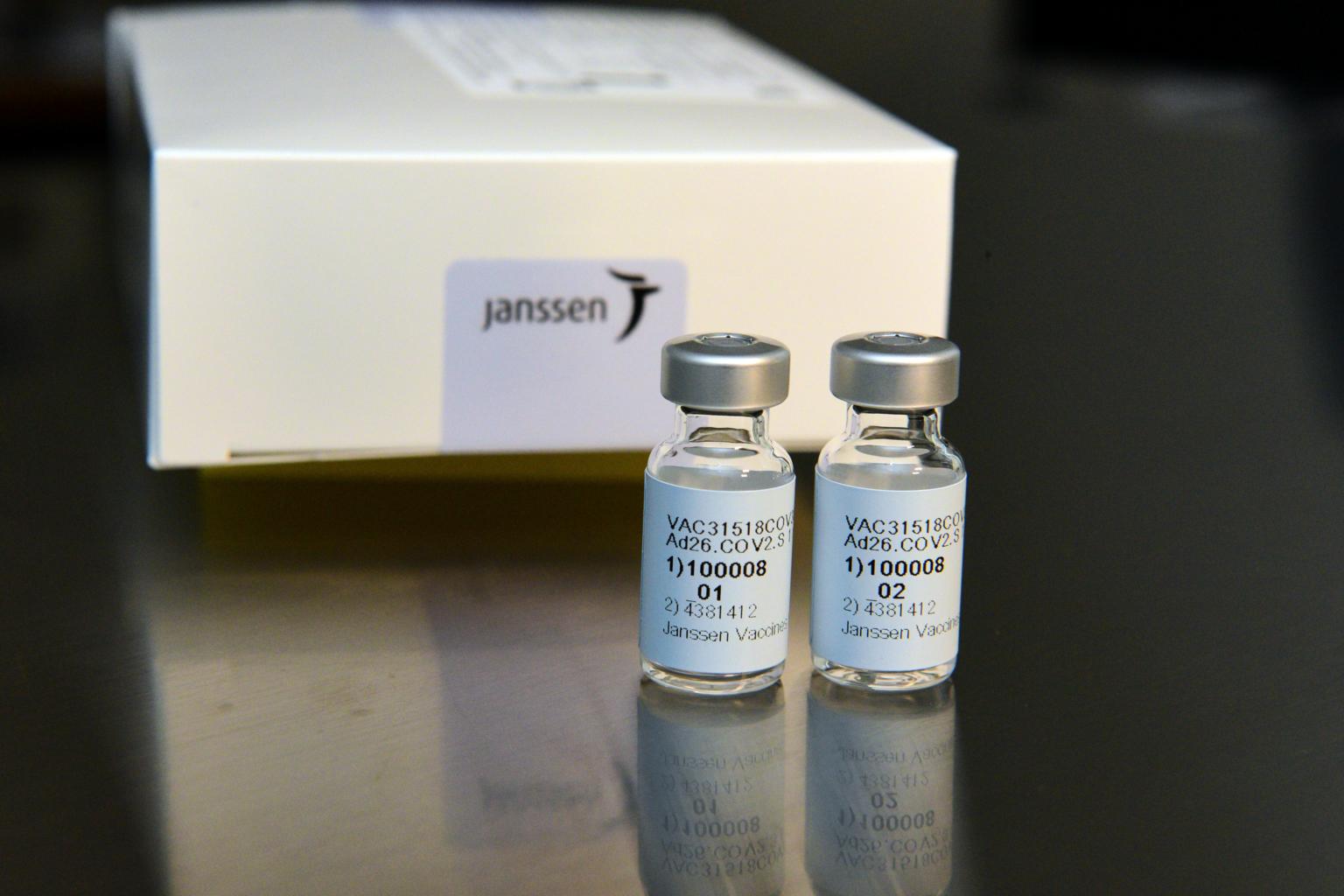US may approve Johnson & Johnson's vaccine soon: How the Covid-19 shot works
Sign up now: Get ST's newsletters delivered to your inbox

The Johnson & Johnson vaccine is based on the coronavirus's genetic instructions for building the spike protein it uses to enter human cells.
PHOTO: REUTERS
Follow topic:
NEW YORK (NYTIMES) - The US Food and Drug Administration could authorise the coronavirus vaccine developed by Johnson & Johnson as early as Saturday (Feb 27), depending on a vote by its vaccine advisory panel on Friday, and distribution could begin within days.
The vaccine provides strong protection against severe disease and death from Covid-19, and could reduce the spread of the virus by vaccinated people, according to new analyses posted online by the company and the FDA on Wednesday (Feb 24).
Here's a look at how the vaccine works.
One shot
Unlike the vaccines made by Pfizer-BioNTech and Moderna, which require two doses, Johnson & Johnson's is just a single shot. Those earlier vaccines use a new technology called mRNA that needs freezers for long-term storage.
Johnson & Johnson's vaccine, which uses sturdier viruses to deliver genes into cells, can keep for three months at normal refrigeration temperatures, making it easier to distribute and easier for pharmacies and clinics to stock.
How it works
The coronavirus is studded with proteins that it uses to enter human cells. These so-called spike proteins make a tempting target for potential vaccines and treatments.
The Johnson & Johnson vaccine is based on the virus's genetic instructions for building the spike protein. But unlike the Pfizer-BioNTech and Moderna vaccines, which store the instructions in single-stranded RNA, the Johnson & Johnson vaccine uses double-stranded DNA.
The researchers added the gene for the coronavirus spike protein to another virus called Adenovirus 26. Adenoviruses are common viruses that typically cause colds or flu-like symptoms. The Johnson & Johnson team used a modified adenovirus that can enter cells but can't replicate inside them or cause illness.
Adenovirus-based vaccines for Covid-19 are more rugged than mRNA vaccines from Pfizer and Moderna. DNA is not as fragile as RNA, and the adenovirus's tough protein coat helps protect the genetic material inside.
Once inside a human cell, the adenovirus travels to the nucleus, the chamber where the cell's DNA is stored.
The adenovirus pushes its DNA into the nucleus, where the gene for the coronavirus spike protein can be read by the cell and copied into a molecule called messenger RNA, or mRNA.
The mRNA leaves the nucleus, and the cell's molecules read its sequence and begin assembling spike proteins.
Some of the spike proteins produced by the cell form spikes that migrate to its surface and stick out their tips. The vaccinated cells also break up some of the proteins into fragments, which they present on their surface. These protruding spikes and spike protein fragments can then be recognised by the immune system.
The adenovirus also provokes the immune system by switching on the cell's alarm systems.
The cell sends out warning signals to activate immune cells nearby. By raising this alarm, the Johnson & Johnson vaccine causes the immune system to react more strongly to the spike proteins.


